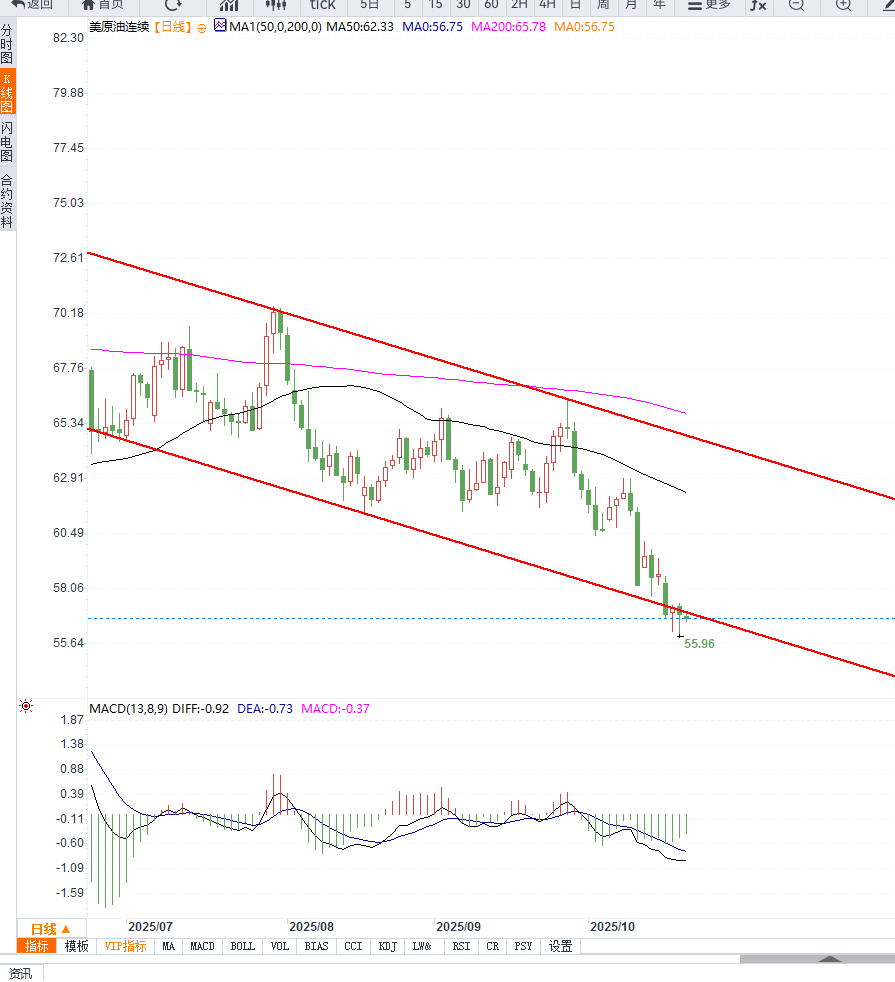Crude oil trading reminder: Supply-side pressure on oil prices will continue to fluctuate downward in the short term
2025-10-21 09:59:51
Traders believe that although some oil-producing countries have verbally mentioned cutting production, actual supply has not decreased, but has further increased due to the recovery of exports in some regions.

The latest report from the International Energy Agency (IEA) was the direct trigger for the oil price drop. The report shows that by 2026, the global crude oil market may have a potential oversupply of about 4 million barrels per day, which is much higher than the market's previous expectations.
At the same time, the U.S. Energy Information Administration (EIA) also raised its domestic crude oil production forecast and warned that inventory levels are still climbing, indicating that supply-side pressure has not yet eased. The signal of ample supply is even more obvious in the spot market.
Data from multiple institutions show that some crude oil shipments from the North Sea and West Africa are experiencing sluggish sales, with buyers delaying delivery or demanding additional discounts, causing the spot price gap to further widen compared to the benchmark price.
More symbolically, the futures curve has clearly shifted into a contango structure, with prices for longer-term contracts higher than those for near-term contracts. This suggests that the market anticipates weak short-term demand and limited spot absorption capacity.
The price gap between near-term and long-term crude oil widened to approximately $0.56 per barrel, the largest level since the end of 2023, indicating a resurgence of storage arbitrage. Demand also lacked sufficient support. Asian crude oil import growth slowed significantly in September, with crude oil inventory inflows falling to 570,000 barrels per day, significantly lower than 1.01 million barrels per day in the previous month.
Furthermore, renewed trade concerns are clouding the outlook for global manufacturing. While the onset of winter in the northern hemisphere may boost heating fuel consumption, gasoline and jet fuel demand has yet to recover to year-ago levels, leaving overall energy demand growth appearing weak.
From a technical perspective, WTI prices remain within a downward trend. If they fail to hold above $60, the short-term trend could extend to the $55-56 area. This level represents both psychological support and a previous low. A break below this level could trigger further passive selling.
If market sentiment improves or OPEC+ unexpectedly cuts production, a short-term rebound resistance level of $62-63 may form. However, overall, both the chart trend and fundamentals indicate a bearish trend.
"We maintain our bearish outlook on the oil market as signs of easing supply become increasingly clear while demand recovery lacks momentum." - Ritterbusch & Associates analyst
Market participants generally believe that any rebound in the short term is likely to be a technical correction rather than a trend reversal. Unless there is supply restriction or major geopolitical events, oil prices may remain at a low level.
If inventories continue to rise and consumption data fails to improve, WTI could fall further to $55 per barrel. Meanwhile, the premium structure of the futures market could prompt traders to hold positions rather than actively buy spot, further dampening the momentum of a price rebound.

Editor's opinion:
The main theme of the oil market is transitioning from a tight balance to loose supply. Current prices do not reflect panic, but rather a rational correction. Bulls should wait for improved demand signals or the implementation of production cuts before considering entering the market. While bears hold the initiative in the current situation, they should be wary of the risk of a rebound triggered by geopolitical or policy events.
Overall, as long as supply growth is faster than demand recovery, US crude oil prices may still fluctuate weakly in the range of US$55-60 per barrel.
- Risk Warning and Disclaimer
- The market involves risk, and trading may not be suitable for all investors. This article is for reference only and does not constitute personal investment advice, nor does it take into account certain users’ specific investment objectives, financial situation, or other needs. Any investment decisions made based on this information are at your own risk.





















